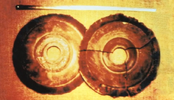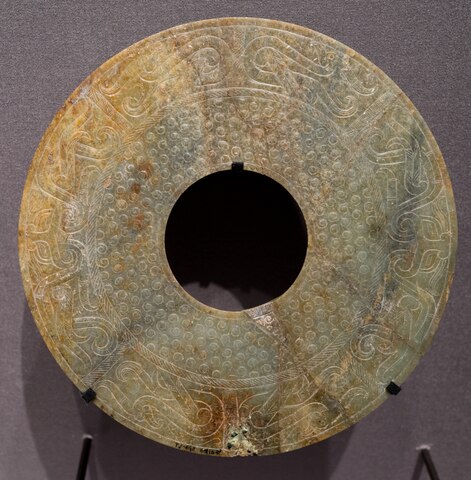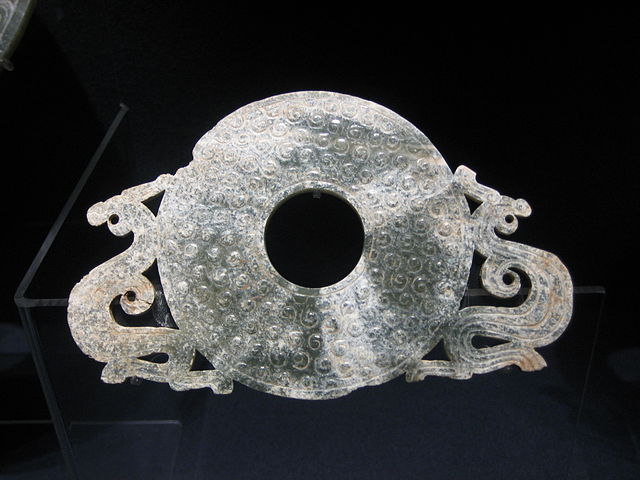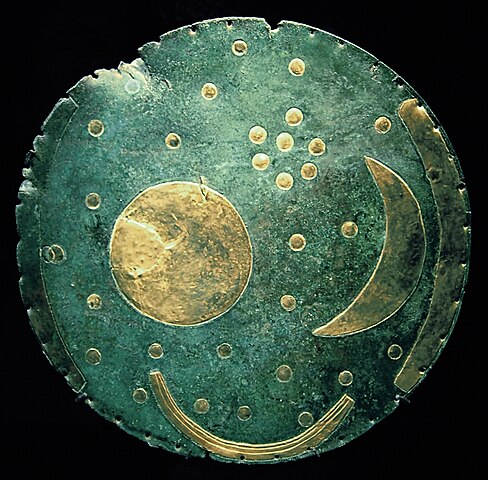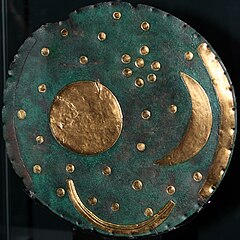I searched the forum and couldn't find anything about this, so I'm opening a thread.
I'm reading a little book from the Yugoslav era called "They also visited us..." by Jovan Knežević, published in 1976.

In the chapter about the mystery of Povlen's balls he writes a few sentences about Dropa stones.
Here is a description: ISRPPA - Exploring the Paranormal Realm of Archaeology
They look like this:

From the Wikipedia: Dropa stones - Wikipedia
I wonder if anyone knows anything more about them?
I'm reading a little book from the Yugoslav era called "They also visited us..." by Jovan Knežević, published in 1976.
In the chapter about the mystery of Povlen's balls he writes a few sentences about Dropa stones.
Here is a description: ISRPPA - Exploring the Paranormal Realm of Archaeology
History
In 1938, an archeological expedition led by Dr. Chi Pu Tei into the Baian-Kara-Ula mountains of China made an astonishing discovery in some caves that had apparently been occupied by some ancient culture. Buried in the dust of ages on the cave floor were hundreds of stone disks. Measuring about nine inches in diameter, each had a circle cut into the center and was etched with a spiral groove, making it look for all the world like some ancient phonograph record some 10,000 to 12,000 years old. The spiral groove, it turns out, is actually composed of tiny hieroglyphics that tell the incredible story of spaceships from some distant world that crash-landed in the mountains. The ships were piloted by people who called themselves the Dropa, and the remains of whose descendents, possibly, were found in the cave.
According to Dr. Tsum Um Nui's translations, one of the lines of the hieroglyphs read,
"The Dropas came down from the clouds in their aircraft. The men, women and children of the neighboring peoples (Ham) hid in the caves ten times before sunrise. When at last they understood the sign language of the Dropas, they realized that the newcomers had peaceful intentions...".
Another section of the writings expressed 'regret' by the Ham tribe that the aliens' spaceship had crash-landed in such a remote and inaccessible mountains and that there had been no way of building a new one to enable the Dropas to return to their own planet. In the years since the discovery of the first disk, archeologists and anthropologists had learned more about the isolated Bayan-Kara-Ula area. Much of what they learned seemed to corroborate the bizarre story recorded on the discs. Legend still preserved in the area spoke of small, gaunt, yellow faced men who 'came from the stars, long, long ago'.
Current Location
There are no completly intact stones known to remain in existance. The disks were supposedly stored in several museums in China. None of these museums report any traces of these disks, nor can any be found of those supposedly sent to USSR for analysis. In a museum in Cen, south of Guangzhou, a man informed of these disks inquired to the curator and photographed a display resembling the disks. However, the disks in the Cen museum disappeared from their display shortly after the photographs were taken.
They look like this:
From the Wikipedia: Dropa stones - Wikipedia
Russian examination
Russian researchers requested the discs for studying, and allegedly several were shipped to Moscow. Once there, it is said that they were scraped for loose particles and put through a chemical analysis which revealed that they contained large amounts of cobalt and other metallic substances. As recorded in the Soviet magazine Sputnik, Dr. Vyacheslav Zaitsev describes an experiment where the discs were supposedly placed on a special turntable whereby they were shown to 'vibrate' or 'hum' in an unusual rhythm as though an electric charge was passing through them.[1]
Ernst Wegerer
Supposedly, Ernst Wegerer (Wegener) was an Austrian engineer who, in 1974, visited the Banpo Museum in Xi'an, Shaanxi Province, where he saw two of the Dropa stones.[3] It is said that when he inquired about the discs the manager could tell him nothing, but permitted him to take one in his hand and photograph them up close. He claims that in his photos the hieroglyphs cannot be seen as they have been hidden by the flash from the camera and have also deteriorated. By 1994, the discs and the manager had disappeared from the museum.[4]
Publications
A reference to the Dropa and Dropa stones is found in the July 1962 edition of the German vegetarian magazine Das vegetarische Universum.[5]
They are mentioned in the 1978 book Sungods in Exile by David Agamon (real name David A. Gamon). This book is written as if it were a documentary of a 1947 expedition with the scientist Karyl Robin-Evans. It follows his supposed travels into the secluded region of the Bayan Har mountain range where he finds dwarfish people called the Dropa. According to his book, the Dropa population consisted of a few hundred members all of which were approximately 4 feet (1.2 m) tall. Robin-Evans allegedly lived among the Dropa for half a year and during that time he learned their language and history, and also impregnated one of the Dropa women. He was told that they had crashed there long ago and that their ancestor had come from a planet in the Sirius constellation.[6] Gamon later revealed in the British publication Fortean Times that his book was his "favorite hoax" and a satire.[7]
In Japan, they were mentioned in 1996 when a translated version of Hartwig Hausdorf and Peter Krassa's Satelliten der Götter ('Satellites of the Gods') was released.[4]
Controversies
It has been suggested that Tsum Um Nui is not a real Chinese name. There is no mention of him in China outside his connection to the Dropa stones.[citation needed] According to Dropa enthusiast Hartwig Hausdorf, Tsum Um Nui is a "former Japanese name, but adapted to Chinese language".[8] Nor is there any mention in any records about Chi Pu Tei's expedition in 1938.[citation needed]
Sungods in Exile with its account of Karyl Robin-Evans in all appearances gave credibility to Dropa stones until 1988 when David A. Gamon told Fortean Times magazine that the book was fiction and Karyl Robin-Evans' imaginary.[citation needed]
The stone discs were supposedly stored in various museums across China. However, none of these museums have any records or traces of Dropa stones ever being there.[citation needed]
According to the Gould-Parkinson system of transliteration,[dubious – discuss] drop-ka is Tibetan for "solitude" or "inhabitant of pasture lands". It is said to be the name of a tribe of Tibetan nomadic herders on the eastern Tibetan plateau.[3]
With Wegerer's photos lacking concrete evidence of the hieroglyphs, they display similarity to bì discs. Bì are round jade discs with holes in their centers. When buried in the earth, the minerals change them to be multi-colored. Bì have been dated to 3000 BCE and were common in what is now Shaanxi. Some bì are decorated with parallel grooves and other markings.[9]
I wonder if anyone knows anything more about them?



